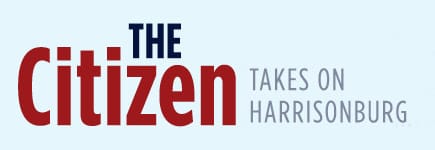By Randi B. Hagi, senior contributor
The city school board will collect community input to help guide the design for the new high school — as well as how it will be set up and operated in conjunction with Harrisonburg High School — including through a public meeting Thursday from 6 to 8 p.m. at the Thomas Harrison Middle School auditorium.
School board chair Deb Fitzgerald said while school leaders invite community members to share suggestions about how the new school should look and function, the meeting will largely focus on how the existing and new high schools will work together.
The school board has an interim agreement with Nielsen Builders, Inc. — a deal the city council approved at its meeting last Tuesday. That initial agreement covers 60 percent of the design phase at which point the final price of the new school’s construction will be hammered out.
But one of the key factors that could affect the design is deciding how students will be sorted between the two schools — the existing high school on Garbers Church Road and the new one slated to be built on property between South Main Street and I-81.
One way to determine who attends each school would be by geographic area of the city.
But other potential options that the document mentions include:
- having one school for grades nine through 10 and one for grades 11 and 12;
- different curriculum emphases at each school (with the example the document gives is that one might focus more on math and science while the other might stress language and arts.)
- Having one of the schools put a major emphasis on an English as a Second Language program.
- Having one school specifically serve ROTC students.
- or having “one high school with two campuses.”
Fitzgerald said not everything listed in that interim agreement is a viable option – such as the two-campus concept.
Other considerations, such as the possibility of solar power at the new high school, didn’t make it into this preliminary document but will be part of discussions leading to the final design.
Those discussions have begun to take place in Programming Committee meetings, in which teachers, staff members and other community stakeholders meet in smaller groups – such as social studies or math – to provide input to the school board and architects.
Others can email programming and design suggestions to [email protected].
Starting strategic planning
The school board is also looking to start its strategic planning process this month. Kevin Castner of Cambridge Strategic Services gave a presentation at Tuesday’s school board work session about the different phases of the process.
“This whole year is a planning year,” Castner said. That will start once the board names a “strategic planning team” of around 25 people, which could include faculty, staff and students. Castner said the group should be representative of Harrisonburg’s demographics.
The strategic plan is an opportunity to discuss and lay out the district’s big-picture priorities.
Superintendent Michael Richards said the way the school board members talked about the strategic plan was one of the factors that boosted his excitement about taking the helm of the district.
“I want students to have deeper learning,” he told The Citizen in a March interview shortly after he was hired. “What I mean by that, and what I think there’s a really great potential for here in Harrisonburg city is that, we can slowly, gradually move away from the traditions “seat-time” model for learning, where seat-time is equated with proficiency or mastery.”
As part of the process, members of the public will have a chance to give input during a community summit in September.
The strategic planning team will then submit a draft of the plan in early November, according to a Cambridge timeline. Then, the school board will gather action teams of 10 to 20 people to research and brainstorm on each proposed strategic goal.
The planning team and action teams will then work together to have a final strategic plan ready to present to the board next April.
“We don’t want a plan that’s going to sit on the shelf,” Castner said.
Metrics will be built into the implementation process to measure how well the plan’s objectives are being achieved.
“This is an opportunity … to come up with a collective vision of what a Harrisonburg city graduate knows and knows how to do,” Superintendent Michael Richards said.
Journalism is changing, and that’s why The Citizen is here. We’re independent. We’re local. We pay our contributors, and the money you give goes directly to the reporting. No overhead. No printing costs. Just facts, stories and context. Thanks for your support.













